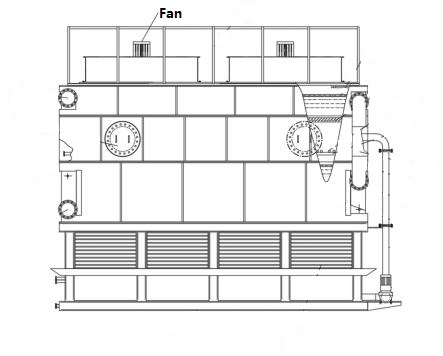
Evaporative Condenser
Overview
Features

1. High efficiency design: The energy efficiency of an evaporative condenser can be influenced by various parameters, such as water flow rate, air velocity, wet-bulb temperature, Coil surface area and material, spray angle, spray water volume. For example, the spraying angle has a certain impact on the heat transfer performance of the evaporative condenser. When the spraying angle is small, there is no liquid film formed on the upper surface of the condenser, which leads to cooling by air and reduces heat transfer efficiency. When the spraying angle is too large, a thicker liquid film will form in the top area of the coil, which increases the thermal resistance and hinders heat transfer. Therefore, there is an optimal spraying angle for the evaporative condenser.
2. The fibrous composite filler is a component of an evaporative condenser that is used to increase the surface area of the heat exchange process. It is made up of a series of corrugated sheets of material that are designed to capture water and air as it passes through the condenser. The fibrous composite filler is typically made up of a combination of materials such as cellulose, wood pulp, and synthetic fibers. The design of the fibrous composite filler can vary depending on the specific application and cooling requirements. For example, some fillers may have a high efficiency honeycomb structure that allows for greater contact between the water and air streams, while others may have a more traditional cross-corrugated design


3. Fast delivery and turn key projects.
Video

Products categories
-

Phone
-

E-mail
-

Whatsapp
-

WeChat
Judy
-

skype
Judy
-

Top
BLG.png)
